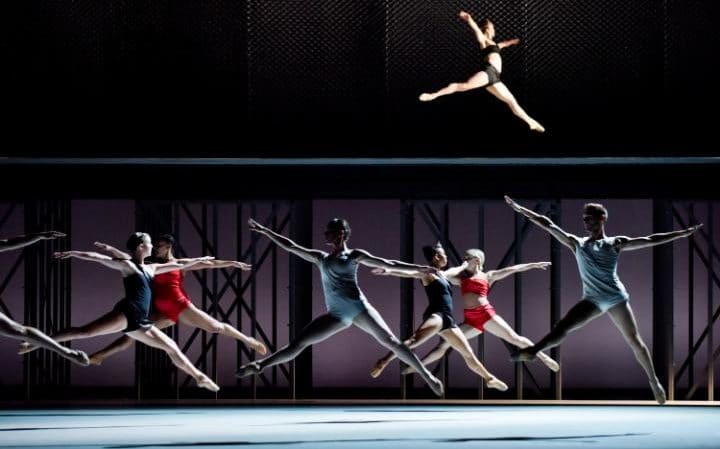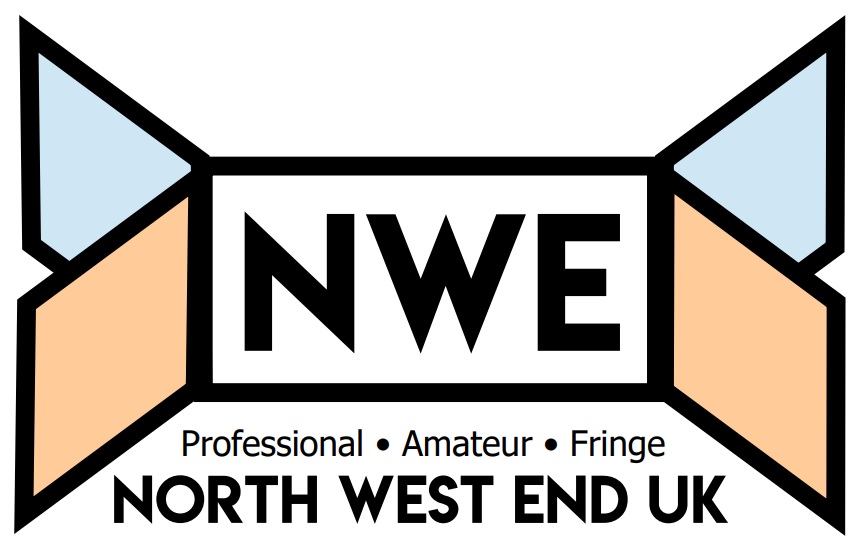Manchester has always had a strong relationship with America from the days of the cotton trade to the infamous ‘Judas’ episode when Dylan played the Free Trade Hall and through to Chicago producers influencing aciiiiid house tunes at the Hacienda.
So it makes perfect sense that the city’s Manchester International Festival chose to revive Available Light created in 1983 by three titans of 20th Century American popular culture – choreographer Lucinda Childs, composer John Adams and architect Frank O. Gehry.
Rock music has taught us that supergroups are often dismal failures as egos get in the way, but this is a genuine collaboration between three masters of minimalism who have created a work that slowly reveals what makes us as humans understand beauty and ourselves.
Gehry’s contribution is a unique split stage with dancers working on the geometric stage and a raised platform. Gehry references his own innovative architectural work hanging a chain link backdrop that shimmers behind the dancers who step slowly between the levels.
The next piece of this complex jigsaw is the sparse electronic score by Adams that lacks the pulse that typifies other minimalist composers of his generation instead using different tempos and daringly throwing in some brass. Adams wanted to mix the precise sounds of the synthesiser and the dirtiness of the natural instruments which works when it shouldn’t. If Kraftwerk were in the business of scoring dance pieces it might sound something like this.
Childs brings the final element creating complex geometric patterns as the dancers move in duos and groups often in sync between the two levels. The space in the score allows them to move in and out of the music as Childs brilliantly forces the troupe to dance on the diagonals making the fluid movement three dimensional and underscores the precision of each performer.
The 11 dancers from her company are all Americans which is important because they instinctively understand what Childs is trying to create, and how they can use their upper body motions to create emotion. There are plenty of her trademark ‘found’ moves – skips, hops, turn, dips, running and walking – alongside more classic dance steps and jumps. One moment the dancers are playful – almost childlike - and then more adult exploring all the elements of our lives.
Mark Grey‘s sympathetic sound design brings out all nuances of the scoer, and Beverly Emonns’ lighting uses a basic colour palate to create mood especially using a bold white slash across the stage in the second half.
All three of the collaborators are at the top of their respective fields, but they also understand that to innovate you have to know the rules in order to break them. Gehry know how to make glorious buildings that don’t fall down, Adams can read a classical score and Childs is a trained dancer. What makes this work truly great is they know instinctively how they can play round the form to make something new. You can’t teach that – you just know it.
When Available Light was first performed it got mixed reviews, but three decades this beautifully executed update is utterly contemporary and exactly the sort of quality work the International Festival continues to bring to the North West. As Childs walks on stage to join her company for a final bow you can in her face how much the wild audience reaction means to one of the all-time greats.
There were some empty seats so clear your diary - and get the credit card out - because you will not see a more technically proficient, audacious and human piece this year.
Available Light is the Palace Theatre Manchester on Friday 7th and Saturday 8th July.
Reviewer: Paul Clarke
Reviewed: 6th July 2017
North West End Rating: ★★★★★
Photo: Joel Chester Fildes

